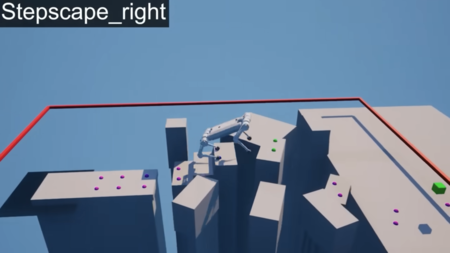A team of researchers in South Korea has developed a quadruped robot capable of performing parkour with remarkable precision and speed, making it mesmerizing to observe in action. This robot can run up walls, jump over obstacles, and plan its route in real time–all completely autonomously.
The robot, named Raibo, was designed by the Robotics and Artificial Intelligence Lab in South Korea. In a paper published in the journal Science Robotics, its creators say the goal was to create a system capable of executing complex movements while also adapting to several terrains.

No direct human intervention. To achieve this, researchers designed a navigation architecture consisting of three modules: one for route planning, another for tracking movements, and a third for real-time target updates. Each module has a specific function but operates in parallel. This allows Raibo to maintain balance, anticipate obstacles, and move forward continuously.
AI in physical form. According to an official YouTube video, the process begins with the planner, which generates possible routes based on a map of the environment. This map is continuously updated using data from sensors and simulations. A neural network then discards risky options and selects the most efficient route.
The tracker guides the robot’s precise movements. It was trained using reinforcement learning, a technique based on trial and error. This prepares the robot to adapt to dynamic and challenging scenarios. To save calculation time, Raibo reuses its own footprints. The rear legs step where the front legs have already been.
 The Raibo training simulation.
The Raibo training simulation.
According to reports, the robot demonstrated impressive capabilities. It could run on uneven surfaces, avoid rocks, cross sloping ramps, climb stairs, and even jump over gaps exceeding one meter. It achieved a speed of 8.86 feet per second. Notably, if the target moved, the robot was able to detect it and recalibrate its route autonomously, without stopping or losing control.
Advancements in robotics are occurring globally. Raibo’s progress is part of a broader trend where robotics and AI are becoming increasingly intertwined. Without AI, robots would largely remain as mere collections of sensors and motors. However, with AI, they can interpret their environment, make decisions, and perform complex tasks autonomously.
Companies like Google are investing heavily in this field. With its latest project, Gemini Robotics, Google has developed a system capable of controlling several types of robots in real time. This system understands human language, recognizes objects in 3D, and adapts to new situations without the need for prior training.
Google claims that this technology’s performance in unexpected tasks is double that of previous models. Although it’s currently in the testing phase, the tech giant is already collaborating with companies such as Apptronik and Boston Dynamics to integrate this technology into advanced humanoid robots.
China is advancing rapidly. Recently, the Asian country hosted a kickboxing tournament featuring four G1 robots from Unitree Robotics. This event was broadcast live and showcased the robots’ abilities to dodge punches, stand up after falling, and continue fighting with surprising agility. Weighing 77 pounds and possessing up to 23 degrees of freedom, these robots are equipped with state-of-the-art sensors.
According to organizers, new multi-sport competitions involving these robots are already in development.
 Robots developed in China during a Kickboxing tournament.
Robots developed in China during a Kickboxing tournament.
Robots working in real factories. In the U.S., humanoid robots are gradually moving from laboratories into industrial settings. One example is Figure 01, which has been operational at a BMW plant in South Carolina for some time. This robot can open doors, climb stairs, and manipulate objects autonomously. However, it still operates slowly and requires a constant power connection via a cable.
A window to the future. While not humanoid and not designed for industrial or household use, the Raibo robot demonstrates advanced capabilities. By combining real-time decision algorithms with lightweight hardware and sophisticated training, machines like Raibo can’t only execute commands but also improvise and display remarkable agility.
The real challenge will be to find practical applications for these advancements, which could signify a major leap forward in robotics.
Images | Liam Shaw | Robotics & Artificial Intelligence Lab | CCTV
Related | Tesla’s Optimus Robot Proves It’s Got the Moves in a Recent Video. It’s Quite Something




View 0 comments